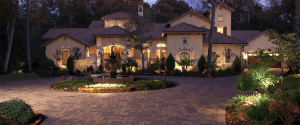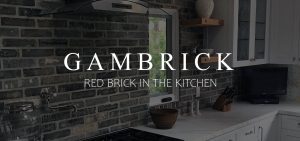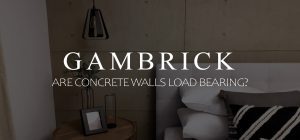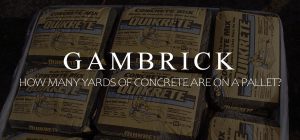What Are Living Green Walls?
Have you ever been walking through a city, a hotel lobby or corporate event and saw a vertical wall of plants. Those are living green walls and they’re quickly gaining in popularity all over the world.
Incorporating living, breathing plants into a cold urban environment not only looks fantastic, but also has a number of other benefits. A living green wall is essentially a wall built from rows of panels filled with plants. The plants grow vertically using hydroponics hidden behind the wall and are supported by a strong metal frame that can either be free-standing or secured to a wall. Living green walls are also called vertical gardens, green walls, living walls or eco-walls. You may have seen them in a hotel lobby, airport, event or on the side of a building. These vertical plant walls vary in size and function as living artwork while providing all the benefits of nature. They’re becoming more popular as time goes on and are now a viable option for residential homes and apartments. Especially in cities where space is limited and natural elements are hard to find.
In the article ahead we’ll answer the questions, what are green walls? How are they made? What are the benefits? And a lot more.
What Are Living Green Walls?
Living green walls are just what they sound like. A wall built out of panels filled with plants. The panels are stacked vertically and horizontally in a grid pattern. There are small scale wall units that are great for residential homes and apartments but the larger displays are all custom built. The size and shape of each living wall is totally unique. Not only in terms of the size but also the pattern. Green walls are like a living piece of art. By carefully placing plants of different colors inside the grid you can create all sorts of patterns.
Imagine placing hundreds of pots next to one another on the floor and then turning them sideways up a wall. That’s basically what a living green wall is. The panels are like small planters. Water is supplied to each plant by a hydroponic system hidden behind the plants. It’s basically just a series of garden hoses running to small sprinkler heads similar to what you see in a super market.
The panels and plants are supported by a string metal grid that’s either free standing or bolted to a structure like a wall or outside of a building.
There’s also a layer of waterproofing material that’s installed behind the pots. It’s designed to keep water off the structure.
The Origin Of Green Walls
Known by several names including green walls, living walls, eco walls, garden walls or vertical gardens, these beautiful creations can be found on exteriors or interiors of buildings and even some homes. They can range in size from just a few square feet to covering an entire building. First developed by Stanley Hart White, a professor of landscape architecture at the University of Illinois, in 1938. He patented his design for “vegetation-bearing architectonic structure and system.” But the invention failed to catch on for decades.
Decades later living walls are one of the most exciting ways to incorporate plants and greenery indoors and out. I’ve even heard of green walls referred to as a living work of art. And I don’t disagree.
A green wall is essentially a wall section that’s been covered with greenery growing in soil or another type of substrate. Most living walls also incorporate an integrated watering system because the classic method of watering plants with a hose doesn’t work well when the plants are 100 foot high on the outside of a building.
When used on the outside of a building, vertical gardens are most frequently found in cities. The plants are not only beautiful but also act as an additional layer of insulation in a few key ways.
- They help reduce the overall temperatures of the building from solar heat.
- Prevent warm air from leaving the building.
When vertical gardens are used on the interior of a building, they can help improve air quality. Plants naturally remove carbon dioxide and produce oxygen-rich air while filtering the air around them by absorbing and cleaning pollutants.
No matter where a living green wall is built, they provide a beautiful design element as well as a potential health benefit.
Interior Green Walls
Green walls are used indoors by companies and homeowners that want to create a unique decorative space.
A green wall is a great option for anyone that wants to enjoy the beauty of plants but has concerns about floor space. Green walls can add color and a one of a kind design to lobbies, events, reception areas and eateries as well as a home or apartment.
Green walls can make a powerful visual statement to clients, potential customers or guests.If you want to make a great first impression as guests come through the door then surprise and amaze them with a living wall filled with plants. People stop and stare at these living creations for hours. It makes a lasting impression that other wall finishes can’t match.
They also provide all of the benefits of including plants in buildings and work environments. A Green wall incorporated into a biophilic design plan can help improve creativity, reduce stress and increase indoor air quality. These aren’t like adding a plant or two in a room. Some green walls are made from a thousand plants. There’s no way to add this much greenery to a room by any other means.
Exterior Green Walls
A living green wall can be built as a decorative element around a sign or logo, in an eatery or cafe, or to cover an entire building’s facade.
The plants can be built right onto the side of any structure or can even be totally freestanding. The options and design are almost limitless.
There are lots of benefits that come with adding plants to a city. We’ll get into some of the science of improved air quality later, but the main benefit you’ll notice right away is how beautiful they are. Most businesses are using green walls as a way to attract attention. They’re striking, if you’ve never seen one in person then I recommend finding one and checking it out. Especially if you have a business and want to try something unique. Describing a green wall and even including lots of pictures just don’t do them justice. Seeing an entire building wrapped in plants is something that’ll definitely leave a lasting impression.
A green wall can be a living piece of art if you take your time with the design. By arranging the plants in a specific way you can play with color and create all sorts of intricate and unique designs. It’s like creating a painting made from plants. And the look changes over time with the coloring of the leaves. Although it’s expensive to build and requires upkeep I’ve never met a business that wasn’t happy with the result.
How Do Green Walls Work?
Green walls are actually built from two main parts.
- The first part is the frame. It’s either free standing or bolted to a wall. It’s metal, very strong and holds all the pots.
- Once the frame is secured the pots are filled with soil and then plants are inserted one by one.
- All those plants need a steady supply of water which is supplied in different ways. Large scale green walls have a series of built in water hoses which provide the water as needed. Inside green walls get all their water from these hoses but exterior walls can get plenty from the rain. Small scale residential units need to be watered the old fashioned way by you.
That’s basically it. A living green wall is just like a garden where the plants are placed very close to one another. They need the same exact care as any garden, lot’s of sun, good soil and water. If a plant dies you need to replace it. Soil should be tended to periodically and make sure to keep all the hoses and small sprinkler heads functioning.
Indoor units need the same level of care as any house plant.
How To Plant A Living Wall
Living walls are typically built like a green roofs. Planter panels hold the growing substance that can be either loose soil, mat media, or structural media.
Loose. Soil is poured onto a shelf or into a bag that’s then attached to the wall. While these systems can be simple to install, the media must be replaced at least once a year for exterior use and every two years for interior. Wind and rain can drain or blow away the soil which means loose media is probably best for small scale living walls or home gardeners.
Mat. Usually composed of thin-coir fiber or felt mats of multiple layers which are best for interior use and with smaller plants. The mats aren’t too sturdy so they can’t support larger plants with thicker, longer roots. Although these mat systems are easy to install, they can’t hold much water which makes them inefficient. However, for small scale projects using smaller plants, they can be a great solution.
Sheet. Living walls are made of an egg crate-type pattern on a plastic sheet that can be used for both outdoor roof gardens and vertical walls. Because of the added depth and texture of the sheet they’re able to hold significantly more water than the mat media system, and can last decades because the plastic isn’t biodegradable.
Structural. This type uses a block of soil or growing media that can vary in size, shape, and thickness. Because of the flexibility in the dimensions and shapes of the blocks, the media can be specifically designed to accommodate certain types of plants that require thicker or thinner media. Another advantage to structural media living walls are their long life. They can last 20 years without needing to be replaced or repaired.
Green Walls Help Improve Air Quality & The Environment
It’s a simple fact that urban areas don’t have the same air quality as more rural ones. Cities are filled with cars and people and don’t have many trees. Polluting gases and particulates fill the air we breathe and in some areas the smog gets so thick you can see it. The good news is that we can do something about it. Reducing our emissions and using plants to help clean up the air is a great place to start.
Plants naturally remove carbon dioxide from the air and produce oxygen. They also filter the air around them by absorbing and cleaning pollutants. This natural effect is multiplied by the number of plants in a given area. This is why plant walls are so effective in a city environment. The sheer volume of plants you can fit in a single plant wall can be more than what’s normally found in the entire city.
But it’s not just pollutants outside that are a cause for concern. There are plenty of toxins inside our homes and where we work that can effect our health too.
It’s called sick building syndrome. Buildings and enclosed spaces are filled with invisible toxins. This is of particular concern since so many people work indoors these days. Almost 80-90% of North Americans spend the majority of their time indoors. Doing everything you can to improve air quality just makes sense.
It’s been well known for a very long time that plants can improve the quality of indoor air. Interior green walls are like planters on steroids. The sheer amount of plant life you can stuff into a single green wall can be more than you’d normally find in an entire building.
What Are The Benefits Of A Green Wall?
Living green walls can turn urban spaces into something more natural. They can improve air quality and provide lot’s of health benefits. Let’s face it, in a city there’s really no place to plant trees. Some buildings are including roof top gardens but space is limited. But one place a city has tons of space is on the sides of the buildings and interior walls. There’s lots of vertical spaces to use plants in every city.
What better way is there to bring life to the concrete jungle than planting thousands of living, breathing plants.
Plants naturally take in carbon dioxide and other pollutants and then expel fresh, clean oxygen. That’s a huge benefit in a city which has almost no greenery, tons of pollution and lots of people.
Green walls also help dampen noise because sound doesn’t bounce off the plants like it does a hard surface. You may not realize this but much of the noise you hear in a city is actually amplified by all the buildings. Green walls would dampen this quite a bit.
There are additional health benefits connected to what’s called biophilic design. It’s the concept that people work better and feel better when they’re surrounded by nature.
Green walls contain a large amount of plants in a relatively small space both vertically and horizontally. By using the walls as a planter, you’ll gain the benefits of having thousands of plants without losing valuable square footage.
Can Green Walls Reduce Energy Costs?
Cities are generally a few degrees hotter than rural areas and it’s mainly due to the materials. Most buildings are made from masonry products which absorb lots of heat. Concrete, block and brick all absorb and store heat by day and then release it by night. That is actually a benefit in winter by in summer months temperatures can get out of hand.
Living green walls help fix this problem by creating a barrier between the sunlight and masonry wall. Because of this sun doesn’t heat up the wall and radiate into the air and building. Overall a single plant wall won’t cool down a city, but it will help keep the building cool which cuts down on it’s energy usage. In the long term this could be a huge savings.
The advantages of living walls don’t end with summer. Plant walls help insulate the building and reduce energy costs for heating in winter.
Overall a green wall used in the right place can definitely help reduce energy costs.
What Types Of Plants Are Used?
Each living green wall is unique and designed specifically for a location and environment. They’re all different. The type of plants you would use in Miami are very different from what you’ll find in NY. It also depends on where the wall is. If it’s an interior wall you can use interior plants and even flowers throughout winter. But if it’s an exterior wall then your limited only to exterior plants that can survive in the existing weather condition.
Plants for exterior walls are chosen based on the climate zone. This is very important. You have to use the correct plants in the correct zones or your plants could die wither from too much heat or too much cold.
The primary species of plants that do well in green walls are those that have a wide range of tolerances. Certain plants are very picky and degrade quickly. You don;t want to use this type in an exterior application. For outside walls use a hardy plants that can survive in a variety of conditions. For an inside wall use whatever you like. Since the climate is controlled it’s much easier to keep inside plants alive and thriving.
Can Green Walls Grow Food
Yes, it’s called vertical farming. Some systems are designed specifically to include herbs and vegetables. Vertical gardens like these can be a great solution for growing food in a tight space.
If you plan on using your green wall to grow food then consider how much maintenance is required. Typically edible plants need to be reseeded once the plant is cultivated. This becomes more of a farm than a display. That’s why it’s called vertical farming. Living green walls are typically meant to stay as they are permanently. Of course plants still need care and some die for the most part there’s not that much maintenance. However a garden typically needs constant work to thrive and a vertical design is no different.
Gardens also need lots of light to grow. If you plan on using a vertical green wall as a garden then research the lighting you’ll need and incorporate it into the design.
Do Green Walls Require Maintenance?
Yes. Just like any type of garden a living green wall needs to be maintained.
Plants will die even when cared for. Soil needs to be tended every now and then. And the water supply needs to keep flowing. Unlike with a potted plant or garden that’s on the ground, some vertical gardens are 100+ feet high. That’s not an easy place to add fertilizer or pluck dead leaves. Small indoor displays are just as easy as caring for a house plant. But large scale commercial projects need special skills and equipment to keep alive and well.
Common maintenance requirements are:
- Water. Just like any plant your living green wall needs water. It’s up to you to make sure the plants get what they need. If you’ve got a display with built in watering hoses then they need to be kept in good working order.
- Food. A little fertilizer now and then never hurts.
- Pests. The good news is that bugs aren’t a major problem in the city but you should still keep a careful eye out for them.
- Upkeep. Plants sometime wilt or die. Occasionally removing dead leaves or planting new plants is a good idea.
- Electric. Most displays don’t need much electric but some are computer controlled or have lighting. If this pertains to your wall then you’ll have to maintain the system.
Interior Living Green Walls
If you’ve ever seen a living green wall in person then you know just how impressive they are. There’s really nothing like it and they’re something I think everyone should try and see at least once. The site can change the way you think about plants inside the home forever.
Exterior Living Green Walls
Outside living green walls are some of the most impressive architectural elements I’ve ever seen. Entire buildings wrapped in a wall of plants is definitely something you should try to see if possible. They’re truly a site to see and a big benefit to cities where space is limited and greenery is hard to come by.
Conclusion: What Are Living Green Walls?
Have you ever been walking through a city, a hotel lobby or corporate event and saw a vertical wall of plants. Those are living green walls and they’re quickly gaining in popularity all over the world.
Incorporating living, breathing plants into a cold urban environment not only looks fantastic, but also has a number of other benefits. A living green wall is essentially a wall built from rows of panels filled with plants. The plants grow vertically using hydroponics hidden behind the wall and are supported by a strong metal frame that can either be free-standing or secured to a wall. Living green walls are also called vertical gardens, green walls, living walls or eco-walls. You may have seen them in a hotel lobby, airport, event or on the side of a building. These vertical plant walls vary in size and function as living artwork while providing all the benefits of nature. They’re becoming more popular as time goes on and are now a viable option for residential homes and apartments. Especially in cities where space is limited and natural elements are hard to find.
If you have a chance to see a living green wall in person then I highly recommend doing so. It’ll leave a lasting impression and change the way you view plant use in an indoor or urban environment.
If you have any questions or comments e-mail us any time.























